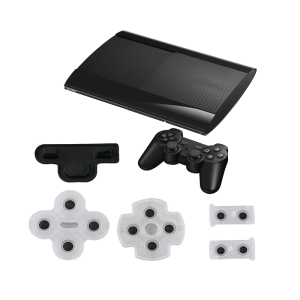A high-performance conductive silicone rubber keypad is a specialized input device designed for applications requiring reliable tactile response and electrical conductivity. These keypads are typically produced using the compression molding process, which ensures precise dimensional control and excellent material properties. The conductive silicone is carefully molded to incorporate conductive carbon or metal particles, allowing the keypad to complete electrical circuits when pressed. This manufacturing approach delivers keypads with superior durability, responsiveness, and long-lasting performance, making them ideal for use in demanding environments across various industries.
Features:
| Specifications | Details |
| Color | Customized |
| Printing Method | Laser Etching, Digital Printing |
| Coating Treatment | PU/Epoxy |
| Price Term | FOB, CIF, DDU, DDP |
| Shipping Way | By Express/Sea |
| Advantage | Durability/Waterproof |
| Application | Consumer Electronics, Automotive Interfaces |
| Quality | 100% Quality Guarantee |
![]()
The Production Process of Conductive Keypad:
- Design: Create a detailed design considering form, key layout, and structure.

- Material Preparation: Gather conductive materials like silicone rubber, carbon powder, metals, and backing material.
- Conductive Layer Formation: Develop the conductive layer using silicone rubber mixed with carbon powder or metal mesh.
- Printing: Use advanced printing methods to apply key patterns and symbols onto the conductive layer accurately.
- Assembly: Integrate the conductive layer with the backing material, ensuring precise alignment.
- Curing: Subject the keypad to controlled curing to enhance adhesion.
- Quality Testing: Thoroughly test sensitivity, electrical conductivity, and aesthetics.
- Packaging: Securely package the keypads to protect against damage during transportation.
Reviews
There are no reviews yet.